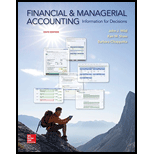
Subsidiary:
Subsidiary is a part of parent company. The companies making investment in the parent companies are the subsidiary companies.
Parent company:
The company having more than 50% control on subsidiary units is parent company. The investee invests in the parent company to earn high percentage of return.
Interest revenue:
The investor invests in the bonds and shares of companies to earn a fixed percentage of income in return of the amount invested at specific time intervals. The interest accrued on the investment is the income of the investee. This interest is also known as interest revenue.
Current assets:
Current assets are assets which are expected to be converted into cash and cash equivalent within a year. They are also used to pay the current liabilities of the company. It includes cash, short term investment,
Fair value:
The fair value is the original value of the investment. The companies have to calculate the value of investment at the end of a year with the help of fair value to record in the books of accounts.
Equity method:
It is a method of ascertaining the
To fill: The blank descriptions with appropriate terms.
Want to see the full answer?
Check out a sample textbook solution
Chapter C Solutions
Financial and Managerial Accounting: Information for Decisions

 AccountingAccountingISBN:9781337272094Author:WARREN, Carl S., Reeve, James M., Duchac, Jonathan E.Publisher:Cengage Learning,
AccountingAccountingISBN:9781337272094Author:WARREN, Carl S., Reeve, James M., Duchac, Jonathan E.Publisher:Cengage Learning, Accounting Information SystemsAccountingISBN:9781337619202Author:Hall, James A.Publisher:Cengage Learning,
Accounting Information SystemsAccountingISBN:9781337619202Author:Hall, James A.Publisher:Cengage Learning, Horngren's Cost Accounting: A Managerial Emphasis...AccountingISBN:9780134475585Author:Srikant M. Datar, Madhav V. RajanPublisher:PEARSON
Horngren's Cost Accounting: A Managerial Emphasis...AccountingISBN:9780134475585Author:Srikant M. Datar, Madhav V. RajanPublisher:PEARSON Intermediate AccountingAccountingISBN:9781259722660Author:J. David Spiceland, Mark W. Nelson, Wayne M ThomasPublisher:McGraw-Hill Education
Intermediate AccountingAccountingISBN:9781259722660Author:J. David Spiceland, Mark W. Nelson, Wayne M ThomasPublisher:McGraw-Hill Education Financial and Managerial AccountingAccountingISBN:9781259726705Author:John J Wild, Ken W. Shaw, Barbara Chiappetta Fundamental Accounting PrinciplesPublisher:McGraw-Hill Education
Financial and Managerial AccountingAccountingISBN:9781259726705Author:John J Wild, Ken W. Shaw, Barbara Chiappetta Fundamental Accounting PrinciplesPublisher:McGraw-Hill Education





